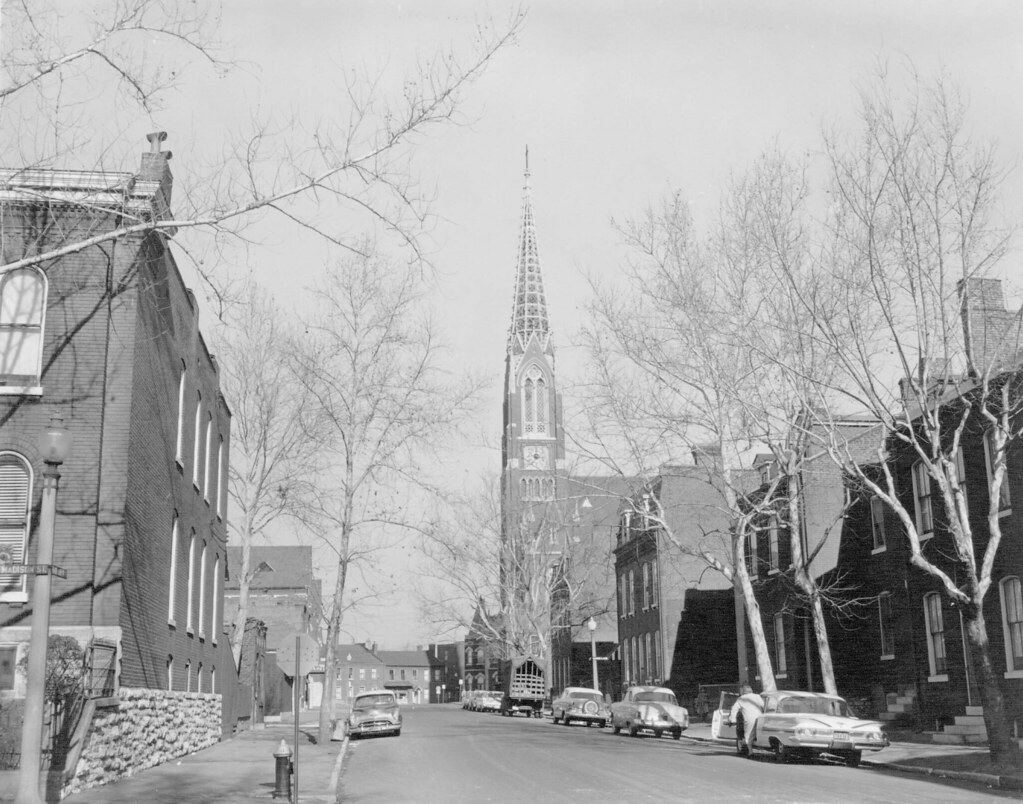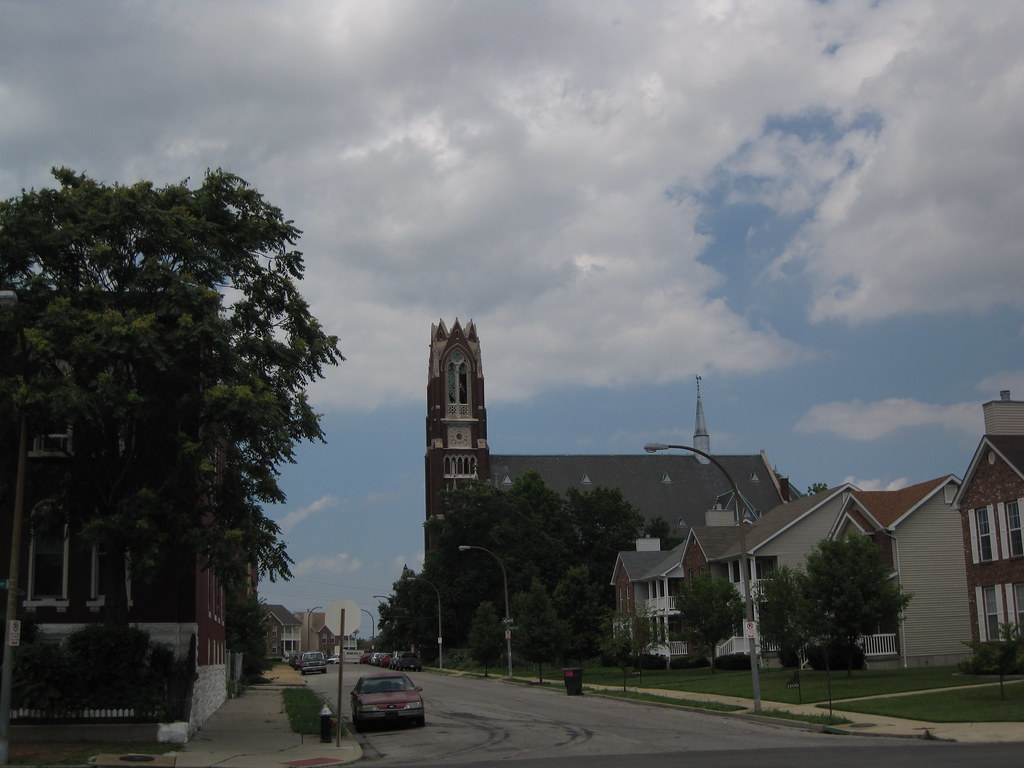 Here's a 1960 view of Hogan Street looking north from Madison in St. Louis Place. The density of brick houses is striking. Also notable is the open-work sandstone spire on St. Liborius Roman Catholic Church, which would be removed in 1965.
Here's a 1960 view of Hogan Street looking north from Madison in St. Louis Place. The density of brick houses is striking. Also notable is the open-work sandstone spire on St. Liborius Roman Catholic Church, which would be removed in 1965. This is the same view today. The house at the corner and its stone wall remain, as does St. Liborius church. The brick houses and tenements are gone, replaced by new houses and (not visible here, but adjacent to the church) the New Roots Farm.
This is the same view today. The house at the corner and its stone wall remain, as does St. Liborius church. The brick houses and tenements are gone, replaced by new houses and (not visible here, but adjacent to the church) the New Roots Farm.





4 comments:
Now THAT is depressing.
Sad to see the loss of the sandstone spire, but it is not a depressing neighborhood, it is a nice place to live. I've got friends around the corner from there on Helen and their door is always open. Literally, in the summer time. Super nice group of neighbors.
Nice picture hope you can post more. I like to refer my neighbors to your blog they can remember the all the buildings when as my sister said "everything was brick. even the street."
These two photos are at the heart of of the planning questions on the north side and the kind of neighborhoods McKee builds.
The earlier photo shows how the street was walkable, suitable for transit and helped give shape and form to the street.
The newer photo is a faux suburban attempt at development and all but ruins the idea of urbanism.
Even homes with front yards in the Tower Grove neighborhood are compact, with corner stores sprinkled throughout the area, creating a walkable area.
There should be an honest dialog about these issues, otherwise McKee is more than likely going to come in and build versions of streets similar to the newer example.
It becomes a question of how the city should evolve. The problem is, with one mega developer, the solution will define the north side for decades to come.
Another weakness of the mega developer system is the uniformity of design repeated over and over. Even in new neighborhoods that are urban orientated, such as between Cole and Cass near downtown, they are dull and uninviting areas due to mega developer repetition.
The mega developer generally uses only a few variations on a design, anything else cuts into the profit margin.
Even if McKee was coming in with his own money the city should have development standards he has to follow, with all of the public money committed it only heightens the need for public input into the final results.
Post a Comment